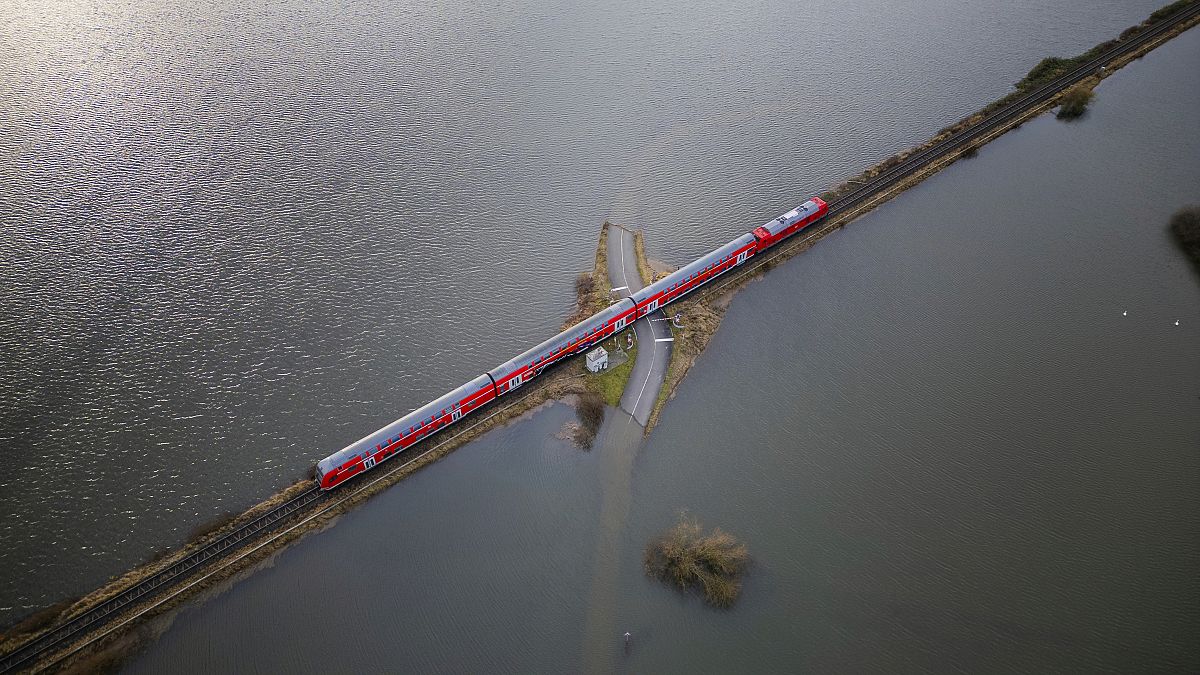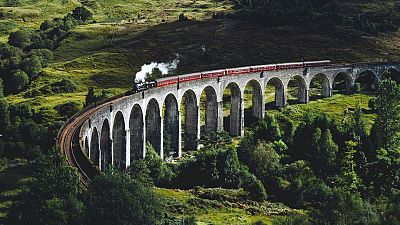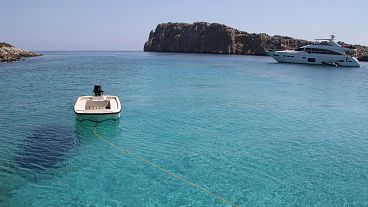In Austria alone, trains were forced to a standstill 1,900 times in 2023 due to weather conditions.
Climate change is increasingly becoming a major challenge for rail transport.
Storms, snowfall, floods and fires are putting rail networks to the test across Europe.
In Austria alone, Railjets and other ÖBB trains were forced to a standstill 1,900 times in 2023 due to weather conditions, according to Austrian newspaper Kronen Zeitung.
So how is the rail industry adapting to a warming planet?
How is climate change affecting the rail industry?
“We have never had as many train cancellations due to storms in recent years as we did last August,” ÖBB spokesperson Bernhard Rieder told Austrian press.
“The floods in Tyrol and Salzburg alone and massive mudslides after thunderstorms led to 716 unscheduled stops due to the weather.”
He added that increasing temperatures in the Alpine region are leading to a rise in embankment and forest fires, track distortions and a decline in protective forests due to heat stress.
“We are watching the disruptions caused by extreme weather events with concern,” he said.
In the UK, a government advisor warned that travel disruption would be worsened by climate change unless the country’s rail network received more funding.
Speaking in August, Sir John Armitt pointed to the heavy rainfall that hit train travel with flash floods and landslides.
Martin Frobisher, group safety and engineering director at Network Rail, has also blamed climate change for the travel chaos.
"We're definitely seeing the impact of climate change. It's happening now, it's real, and it is having a significant impact," he told UK newspaper the Financial Times.
The company, which owns and manages most of the railway infrastructure in the UK, has also added a message on its website warning that "more frequent and more extreme weather conditions caused by climate change will impact our ability to run the railway safely and on time."
Heatwaves are also responsible for widespread train cancellations, due to problems like buckled rails and fallen overhead power lines.
Railway tracks are engineered to withstand a certain range of temperatures but can become distorted in very hot conditions.
Heat can also cause overhead power lines to sag and catch on train equipment.
How is the rail industry adapting to climate change?
In Austria, overhead power lines are being retrofitted to prevent overheating. Additionally, rails are being made more heat-resistant by applying white paint.
Slopes at risk of slipping are monitored even more closely and weather observation is also being expanded.
In the UK, more has been spent on drainage, and technology is being introduced to remotely monitor rail temperature.
Following the death of three people in August 2020 when a train collided with a landslip in Aberdeenshire, Network Rail has developed new software to predict sudden, torrential rainfall.
The company’s Cardiff operations centre deploys heat sensors and cameras to keep track of rail conditions around the region.
Although this won’t tackle service disruptions, it means safety can be improved by putting speed restrictions in place and calling in maintenance teams.
Network Rail has also announced it has earmarked £2.8 billion (€3.2 billion) to adapt the UK's rail infrastructure to climate change between 2024 and 2029.
Much of the network still uses Victorian-era structures that cannot withstand the impact of extreme weather.
"Large parts of the rail network continue to depend on structures, buildings and earthworks assets that were installed as the railway was originally built between 1850 and 1920," the organisation said in a 2023 report.
"A growing number of these assets are reaching 'end of life', as well as being exposed to changing weather patterns, which increase defects, failures and weather-related disruption to passengers and freight users."
The funding will be invested in rebuilding thousands of kilometres of drains, cuttings and embankments to be more resilient to extreme weather such as flooding or landslips.
Key staff members within the company will attend its new 'weather academy' where they will become 'amateur meteorologists'. The programme will teach staff how to analyse weather predictions and make better operational decisions.
Europe’s ‘tri-brid’ trains that could revolutionise rail transport
The rail industry is also turning its attention to the root of the problem and working to reduce its impact on global warming.
Italian company Hitachi Rail has developed a ground-breaking tri-brid train.
The Masaccio locomotive can be powered in three ways: via overhead electric lines, via a diesel hybrid engine or via battery.
The revolutionary battery can be charged when the train is running on electricity from the overhead lines. It can also harness the braking energy from the train stopping.
This planet-friendly battery can power the train, without the need for diesel, for short sections of line where there are gaps in the electrification.
It is also employed during the approach and departure from stations to the train doesn’t contribute to a town’s noise or air pollution.
The trains are tested in a specially built climate chamber that simulates temperatures from -50 to +40C to ensure they can withstand the weather extremes of the future.



